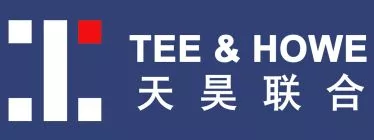- in Asia
- within Technology topic(s)
- with Inhouse Counsel
- in Asia
- with readers working within the Pharmaceuticals & BioTech industries
Thanks for the notification from Aaron Wininger of Schwegman Lundberg & Woessner, P.A. , the China State Administration for Market Regulation SAMR announced the finalized antimonopoly guidelines for the pharmaceutical sector at the link below:
These guidelines were announced on 23 January 2025, and then became immediate effective.
The draft was announced in August 2024, and was reported in my article below:
I have compared the August 2024 draft the final version, and note the following important (in my view) changes (in below, unless otherwise specified, the article numbers refer to those in the final guidelines):
1) Instead of being directly forbidden (as being monopolistic) in the draft, the final guidelines changed to recite the followings are being generally monopolistic (i.e. violate article 17, 18, or 22 of the Chinese Antimonopoly Law):
- Article 8 – Fixing prices.
- Article 9 – Limiting manufacturing or selling quantities.
- Article 10 – Segmenting sales markets or raw material procurement markets.
- Article 11 – Limiting purchase of new technologies, equipment, new technology and/or new pharmaceutical development.
- Article 12 – Actions boycotting transactions.
- Article 14 – Actions fixing prices, including resale prices.
- Article 21 (article 22 in the draft) – Unfairly high price
- Article 22 (article 23 in the draft) – Refusal to transact without proper reason, including reduction in manufacturing scale (!), delaying supply, setting high security deposit, and so on.
- Article 23 (article 24 in the draft) – Limiting transaction, including implementing punitive and incentive measures to do so.
- Article 24 (article 25 in the draft) – Tie up sales.
- Article 25 (article 26 in the draft) – Various unreasonable restrictions on purchase quantity, territory, security deposit, and so on.
- Article 26 (article 27 in the draft) – Differential treatment, including price, discount, payment method and so on.
[The above changes would make compliance easier, i.e. at least some room to argue being not monopolistic.]
2) Article 6, regarding the definition of the relevant market, the followings are added for small molecule drugs:
- Based on factors such as use or efficacy, multiple small molecule drugs with close substitution relationships can be determined to constitute the same relevant commodity market. [My reading of this is, if there are substituted drugs with similar use or efficacy, then it is less likely to be considered as monopolistic.]
- If a small molecule drug is irreplaceable for a specific indication, based on the specific circumstances, that small molecule drug can be determined to constitute a separate relevant commodity market. [My reading is, if the drug is the only one in a specific indication, then this drug will be treated separately for that specific indication from other indications that the drug could treat.]
3) Article 10, limitation on purchase of new technologies, equipment, new technology and/or new pharmaceutical development that would be considered as monopolistic, the following were deleted [It seems that the limitations below now become allowable after the deletions.]:
- Limiting drug research in field irrelevant to the joint research and development agreement.
- After finishing the research and development, limiting drug research in field related to the joint research and development agreement.
4) Article 13, compensation to generics for not entering the market (for example for not challenging validity of the relevant patents), when analyzing whether the relevant agreement would be monopolistic, in the final guidelines, the consideration "whether the drug patent would be invalidated" was deleted.
5) Article 16 (regarding restrictions on region, client, sales channel, time, territory, and where to buy from as being monopolistic) in the draft was deleted in the final guidelines.
For the articles that remain unchanged in the final guidelines, my conerns in my August 2024 article still apply.
Overall, my view is that the changes in the final version could make the life of a drug innovator easier than in the draft. As always, any comments are welcome.
The content of this article is intended to provide a general guide to the subject matter. Specialist advice should be sought about your specific circumstances.


